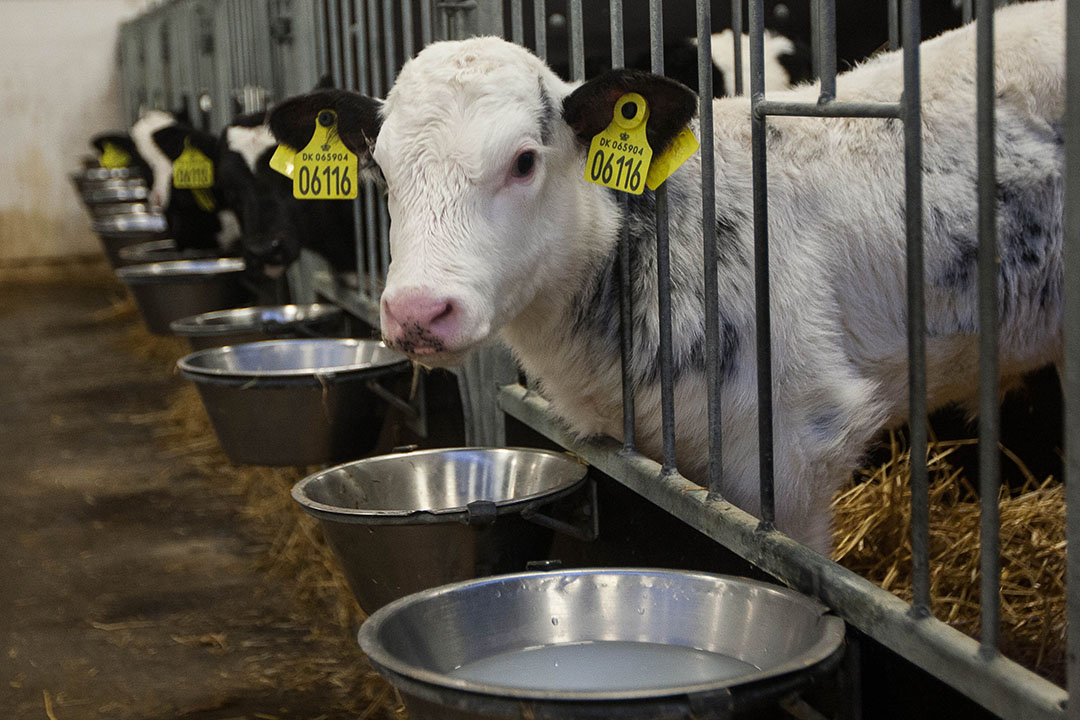Using alkalised heifer rearing rations improves performance

Comparisons during an on-farm trial in North Yorkshire in England with a standard proprietary heifer rearing nut discovered that the utilisation of a new alkaline concentrate significantly increased the daily liveweight gain of the heifers.
The study
In total the trial looked at the performance of 48 weaned pedigree Holstein heifer calves on the farm. Calves on the trial were weaned and grouped into pens of 4 at 12 weeks of age. In total six groups of four heifers were assigned to each of two feed treatments: a standard heifer developer compound feed or an alkalised cake plus ad lib straw and water were available to both groups.
Results of the trial
The trial co-ordinator Hannah Booth from FiveF Alka says the results highlight the benefit of feeding an alkaline diet to valuable replacement heifers that are the future of the dairy herd. Booth said: “Reducing the rumen acid load that these young animals have to deal with is just as important as it is for adult milking cows. The alkalinity of the diet also influences post-ruminal fermentation in the intestines, which produces a lesser effect on the calf’s pH homeostasis, in turn promoting better performance.” Calves fed the alkalised compound feed nut gained, on average, 0.8kg per day whereas those on the standard rearing nut only achieved 0.68kg per day. Calves fed the alkalised nut also had significantly higher faecal pH scores of 7.1 v 6.9.

Other study results
There have been other studies into the use of alkalised feed for heifers particularly so to prevent acidosis in the rumen culture fermenting carbohydrates. In a particular research the scientists set out to evaluate the use of magnesium hydroxide as buffer to control acidosis in rumen culture fermenting carbohydrates in vitro. The experiments were carried out in the chemostat system in which the reactor used was a 200 ml of working volume. A series of fed-batch trials were carried out in fed-batch system with a hydraulic retention time of 4 days. All digesters were completely mixed with the rotation of 55 rpm, and the temperature was controlled at 39°C ± 0.5°C. The published results showed that the supplementation of magnesium hydroxide at a rate of 50 mM/day to the corn starch feed (12.5 gm per litre per day) for the rumen culture could prevent acidosis while at the same concentration of sodium bicarbonate addition to rumen culture, acidosis cannot be prevented in which lactic acid accumulated up to 200 mM.
Supplementing magnesium hydroxide to the mixture of starch and sugar feeds prevented acidosis in which the major fermentation end product formed was acetate. A daily feeding with the ratio of 4.5:1 (starch to magnesium hydroxide) was feasible to prevent rumen acidosis.
Effects of feeding frequency on dairy cattle
Feed delivery frequency is an important strategy in modern dairy management. This article provides a review of the impact of different feeding frequency levels.
Rumen acidosis
Rumen acidosis is a metabolic disease of cattle which can show clinical signs of the disease, but there will be several more which are affected sub-clinically. Acidosis is said to occur when the pH of the rumen falls to less than 5.5 from the normal 6.5 to 7.0. Symptoms of acute acidosis include little or no feed intake; little or no rumination; increased heart rate; increased breathing rate; diarrhoea; lethargy and death.
During the study the researchers concluded that magnesium hydroxide added to the rumen culture could prevent lactic acid accumulation while sodium bicarbonate supplementation did not prevent acidosis and had lactic acid accumulation.







